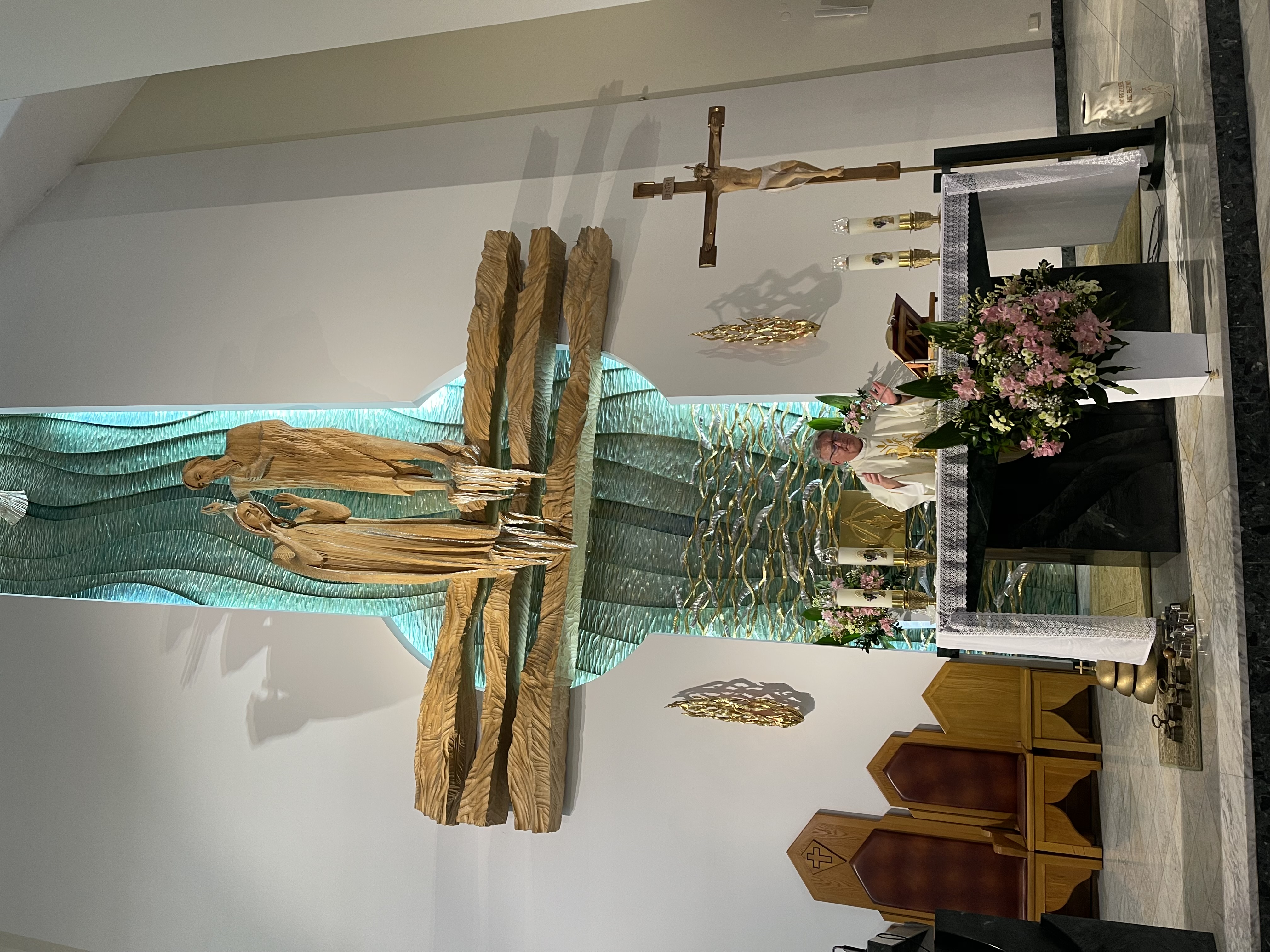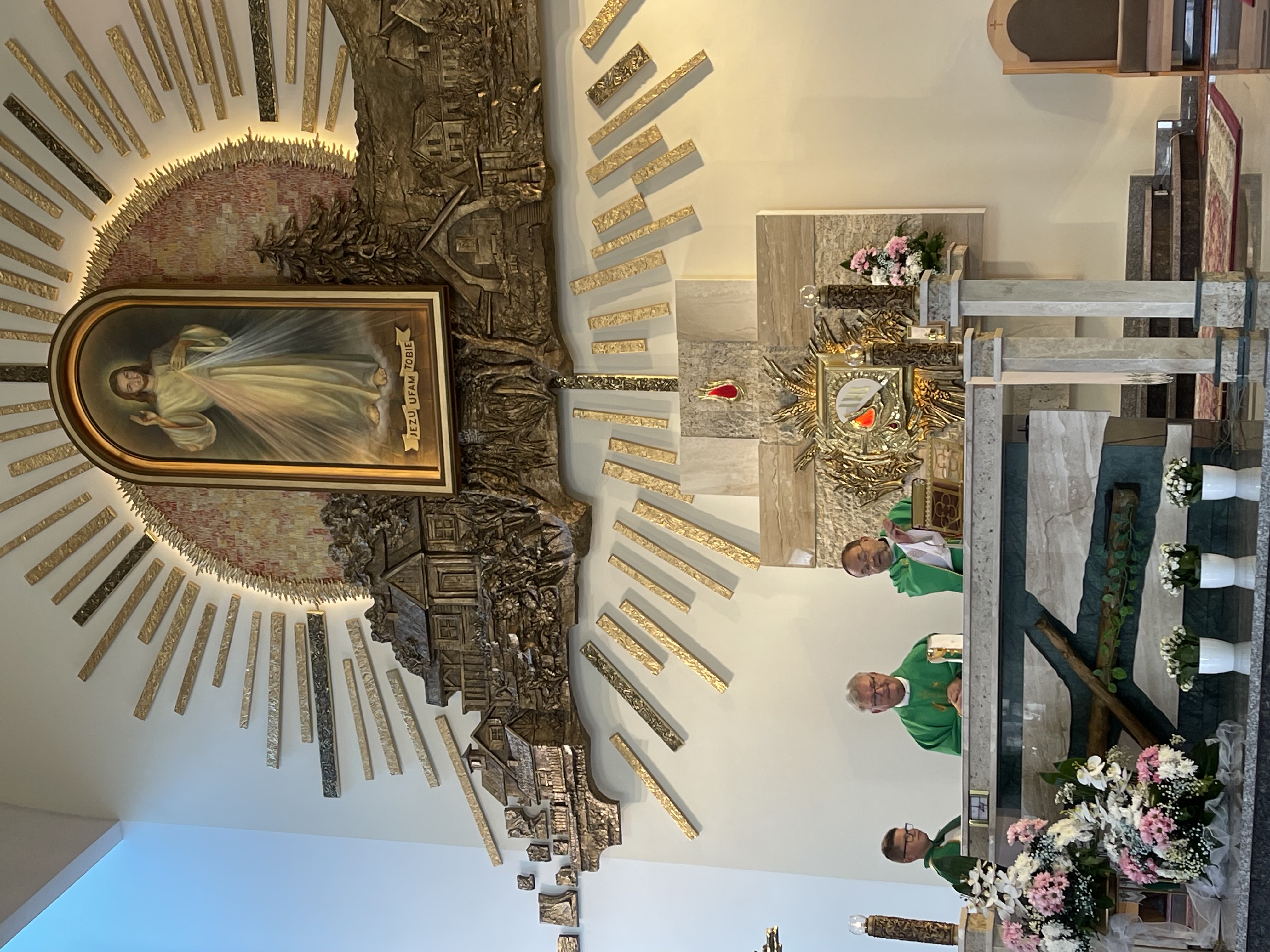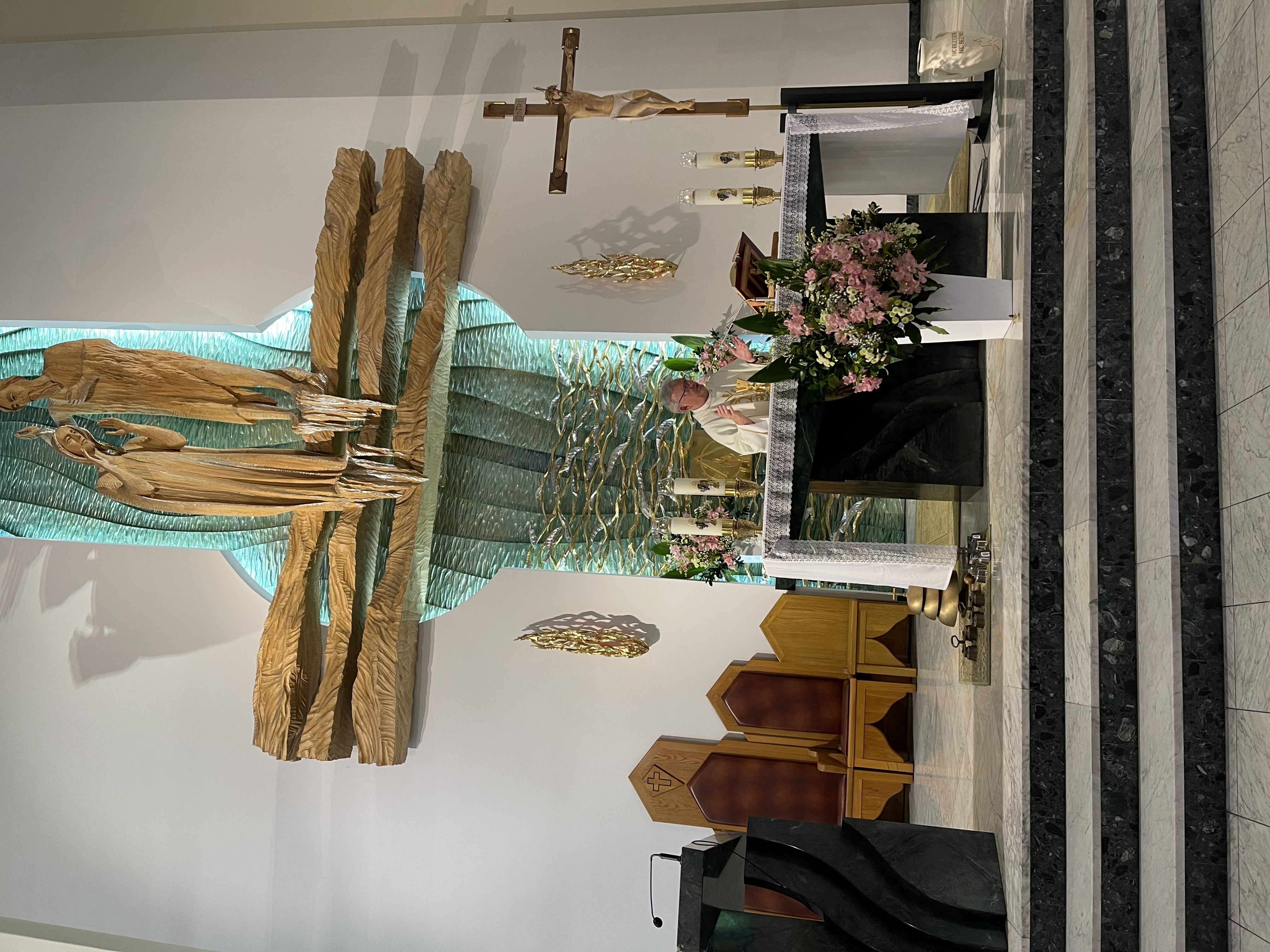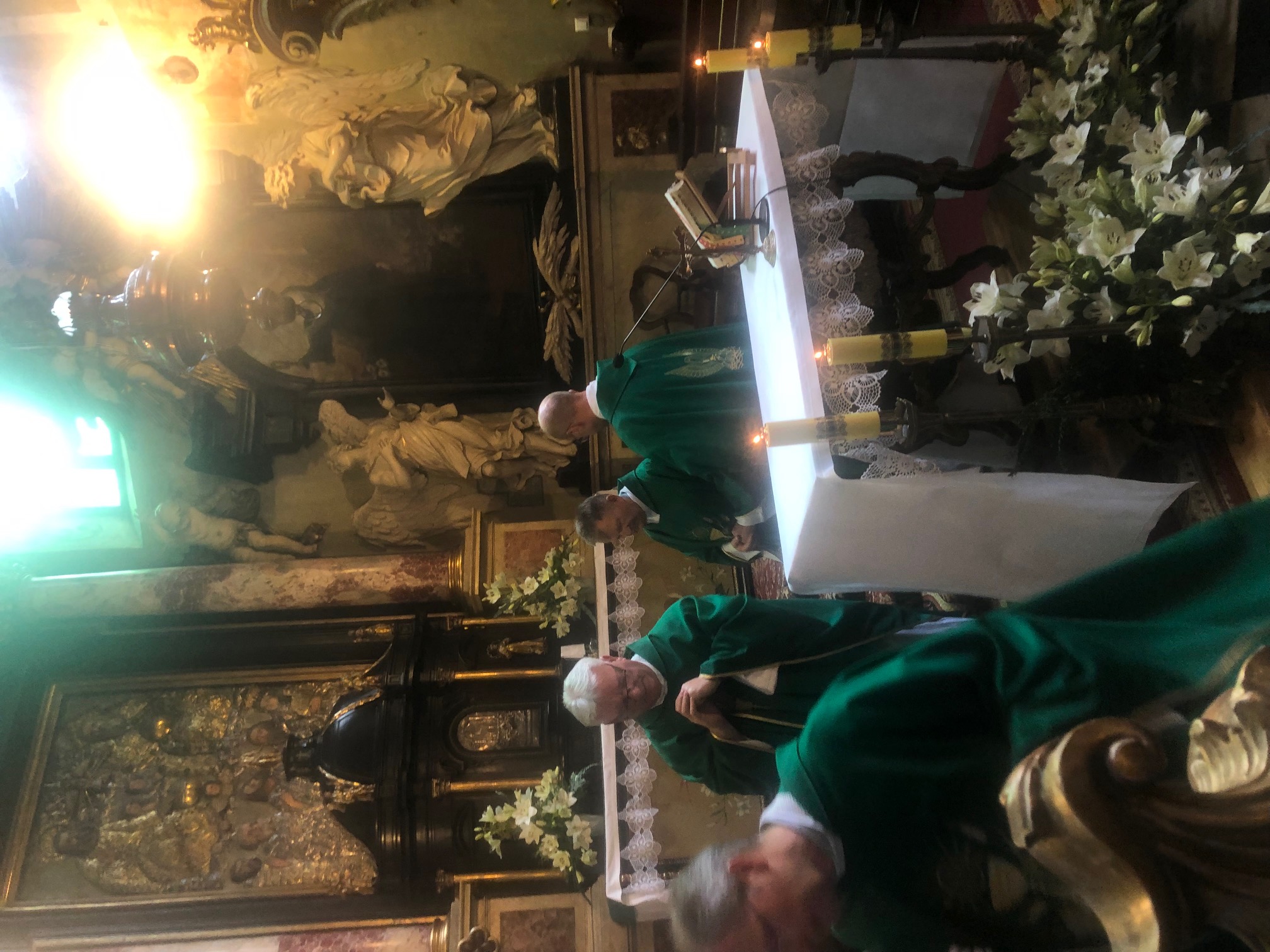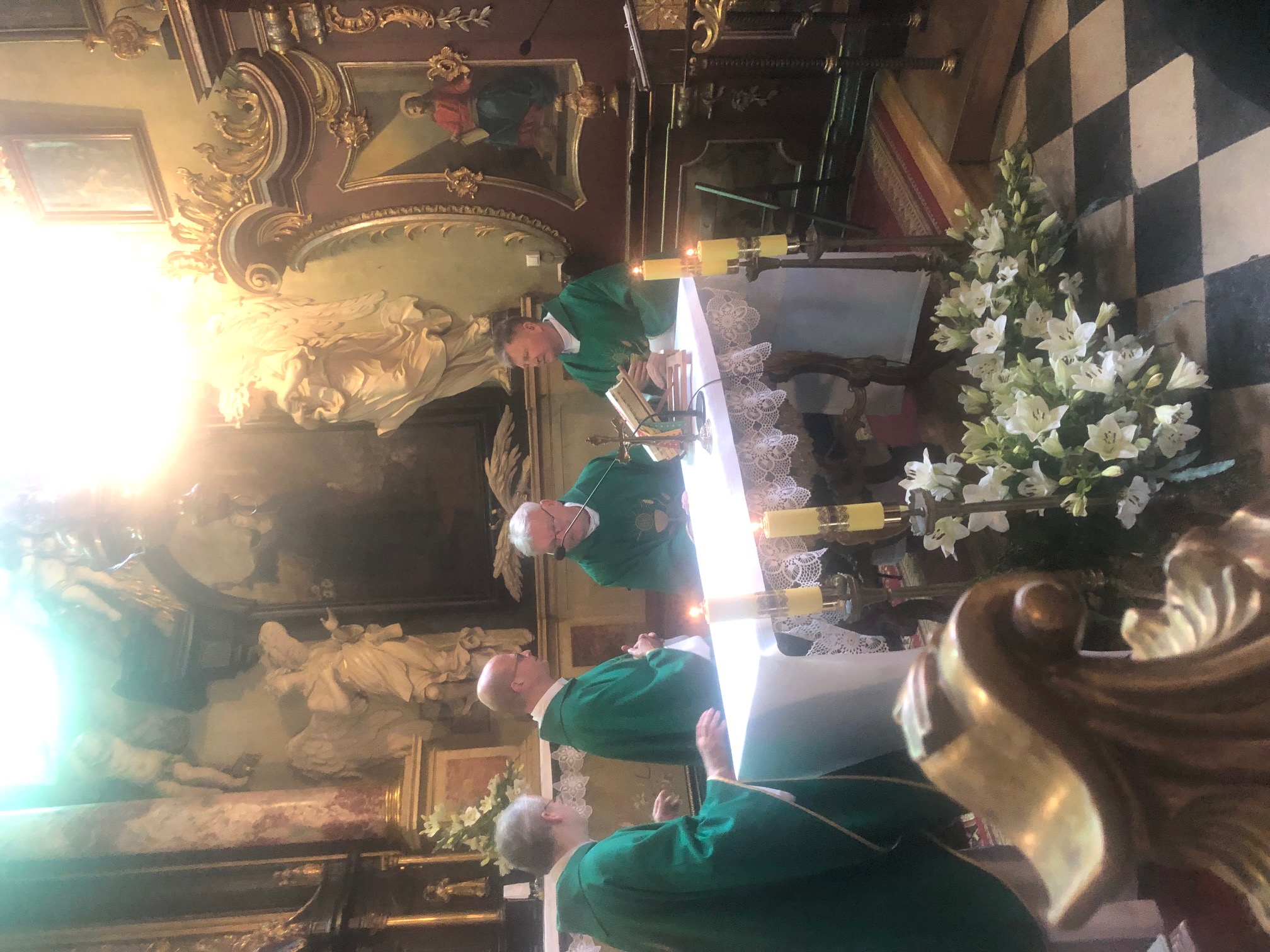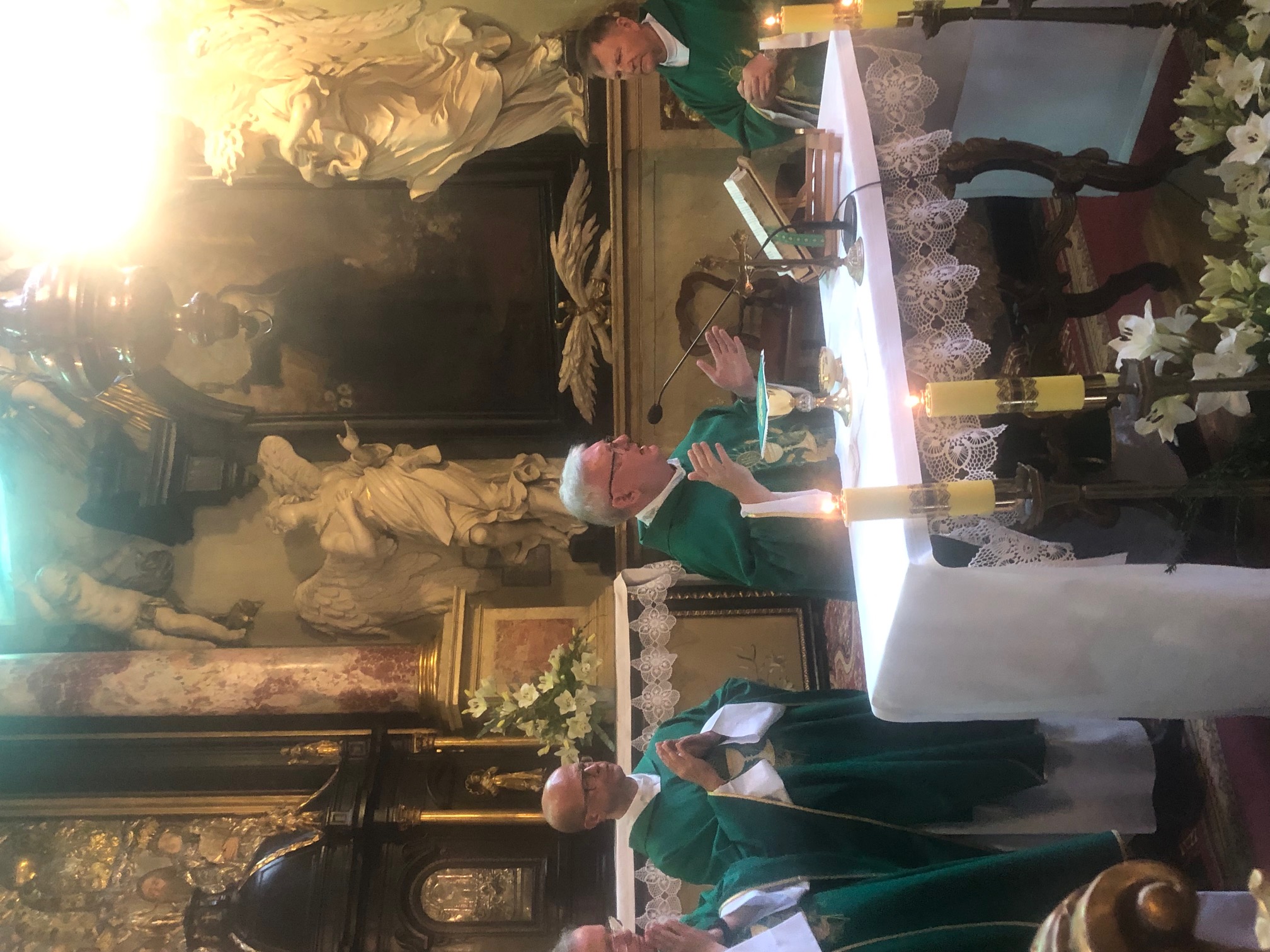Sts. Anne and Joachim
Feast date: Jul 26
On July 26 the Roman Catholic Church commemorates the parents of the Virgin Mary, Saints Joachim and Anne. The couple's faith and perseverance brought them through the sorrow of childlessness, to the joy of conceiving and raising the immaculate and sinless woman who would give birth to Christ.
The New Testament contains no specific information about the lives of the Virgin Mary's parents, but other documents outside of the Biblical canon do provide some details. Although these writings are not considered authoritative in the same manner as the Bible, they outline some of the Church's traditional beliefs about Joachim, Anne and their daughter.
The “Protoevangelium of James,” which was probably put into its final written form in the early second century, describes Mary's father Joachim as a wealthy member of one of the Twelve Tribes of Israel. Joachim was deeply grieved, along with his wife Anne, by their childlessness. “He called to mind Abraham,” the early Christian writing says, “that in the last day God gave him a son Isaac.”
Joachim and Anne began to devote themselves to rigorous prayer and fasting, in isolation from one another and from society. They regarded their inability to conceive a child as a surpassing misfortune, and a sign of shame among the tribes of Israel.
As it turned out, however, the couple were to be blessed even more abundantly than Abraham and Sarah. An angel revealed this to Anne when he appeared to her and prophesied that all generations would honor their future child: “The Lord has heard your prayer, and you shall conceive, and shall bring forth; and your seed shall be spoken of in all the world.”
After Mary's birth, according to the Protoevangelium of… Read More




